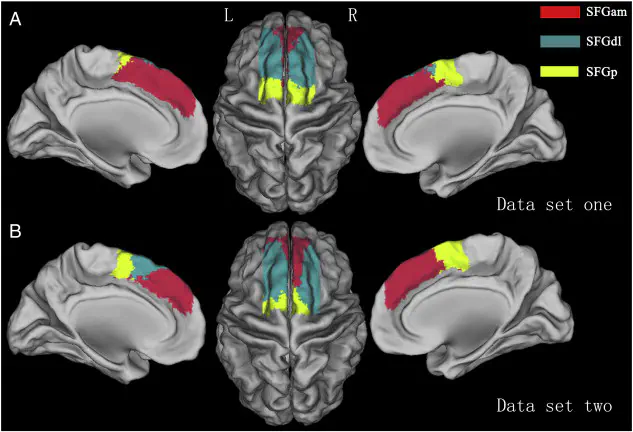 SFG parcellation
SFG parcellationAbstract
The superior frontal gyrus (SFG) is located at the superior part of the prefrontal cortex and is involved in a variety of functions, suggesting the existence of functional subregions. However, parcellation schemes of the human SFG and the connection patterns of each subregion remain unclear. We firstly parcellated the human SFG into the anteromedial (SFGam), dorsolateral (SFGdl), and posterior (SFGp) subregions based on diffusion tensor tractography. The SFGam was anatomically connected with the anterior and mid-cingulate cortices, which are critical nodes of the cognitive control network and the default mode network (DMN). The SFGdl was connected with the middle and inferior frontal gyri, which are involved in the cognitive execution network. The SFGp was connected with the precentral gyrus, caudate, thalamus, and frontal operculum, which are nodes of the motor control network. Resting-state functional connectivity analysis further revealed that the SFGam was mainly correlated with the cognitive control network and the DMN; the SFGdl was correlated with the cognitive execution network and the DMN; and the SFGp was correlated with the sensorimotor-related brain regions. The SFGam and SFGdl were further parcellated into three and two subclusters that are well corresponding to Brodmann areas. These findings suggest that the human SFG consists of multiple dissociable subregions that have distinct connection patterns and that these subregions are involved in different functional networks and serve different functions. These results may improve our understanding on the functional complexity of the SFG and provide us an approach to investigate the SFG at the subregional level.